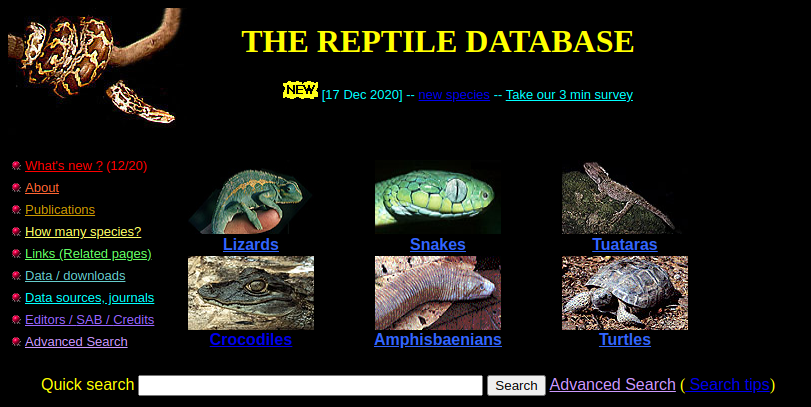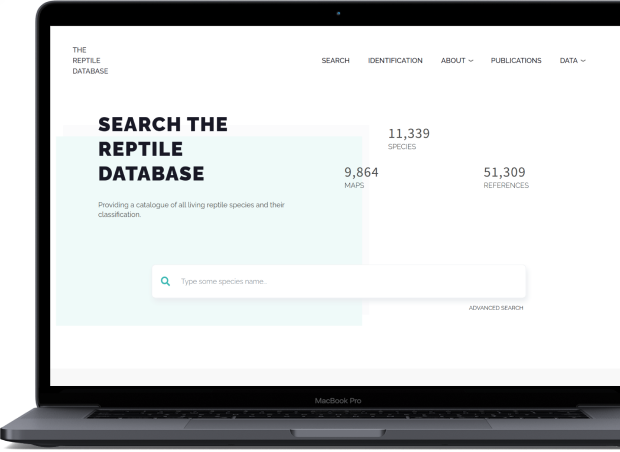
About
The Reptile Database(Wikipedia) The Reptile Database, established in 1996, catalogs all living reptile species and their classifications to promote biodiversity data access. The application was completely redesigned to enhance the user interface and introduce a species-identification tool as well as a geospatial search.
- Vue.Js frontend
- Spring Boot backend
- Elasticsearch in the ELK stack
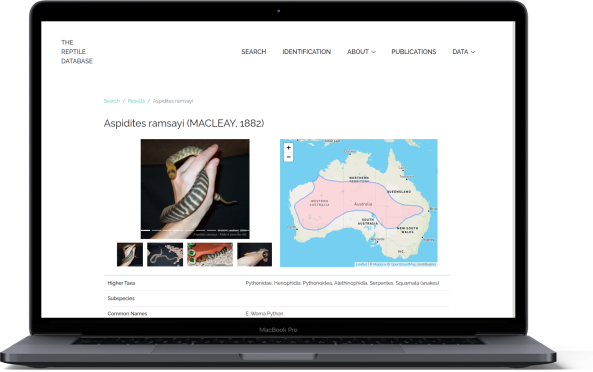
Not only are images crawled from other publicly available databases, catalog data now also features range maps for nearly every species and “RedList” tags for endangered species.
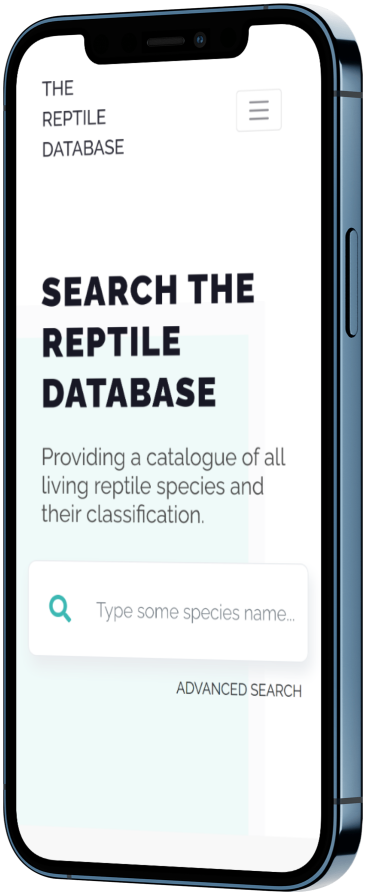
As ~30% of the users browse the website on mobile devices it’s fully mobile compatible.
Geo-Search
Using Elasticsearch, thousand of shapesfiles were shrunk and converted into the GeoJSON format. This data is then used to both search and visualize the distribution areas of reptile species.
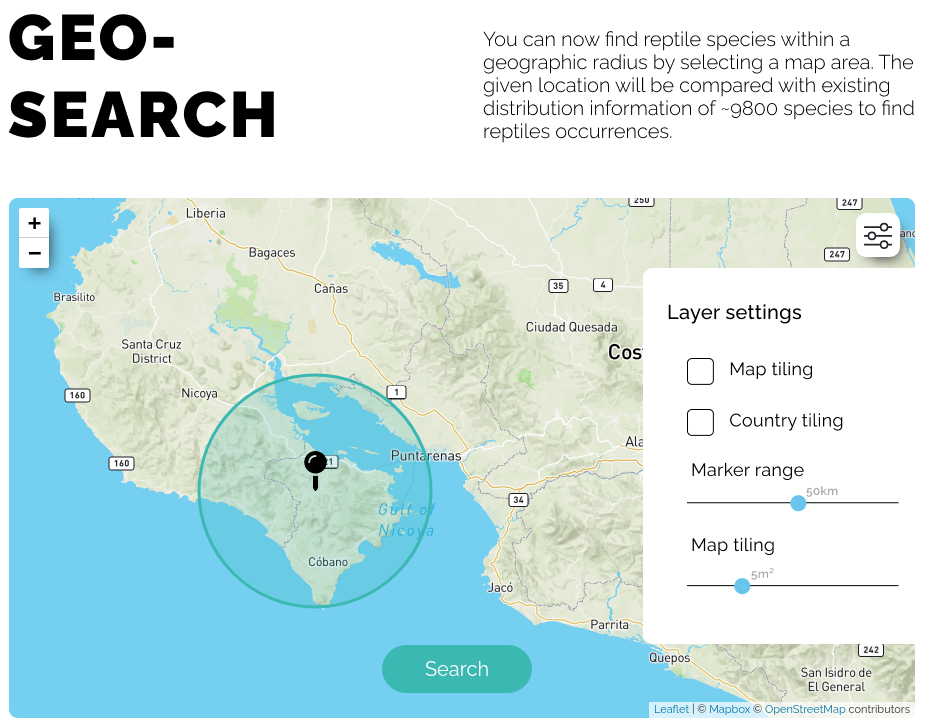
Range maps
Based on a 2017 research paper I published in Nature ecology & evolution from 2017, the spatial data of approximately 9500 species was stored in Elasticsearch. This data, composed of vectorized coordinates, is also used for location approximation in geolocation searches.
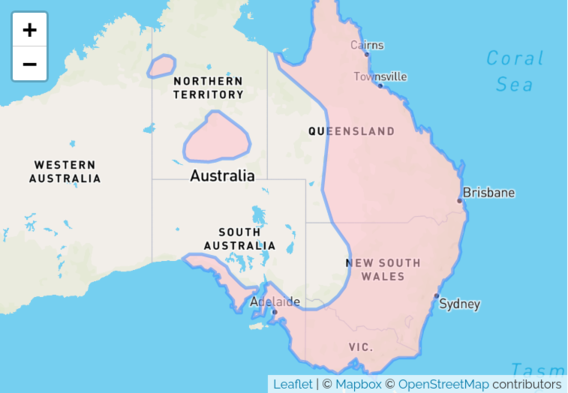
ID-Tool
To streamline catalog data access, we developed an identification tool. This tool uses morphological traits like color, size, pattern, and geo-location for database searches, bypassing the need for known scientific species names.

Collaborating with the Reptile Database team, we concluded that an AI-based approach was impractical due to reptile photo variations and resource limitations (this may not apply nowadays). Instead, we used a specialized search engine to rank results based on morphological features, achieving a 73% identification rate, 10% less error-prone than current AI methods.
Implementation
Mockups were developed using insights from prior research and my thesis use-cases. A survey was also conducted to identify the most desired features.
Design
Fonts
In my first real-world experience, I learned about typography selection. I chose Raleway for its professional look and readability, making it suitable for an academic context.

Color
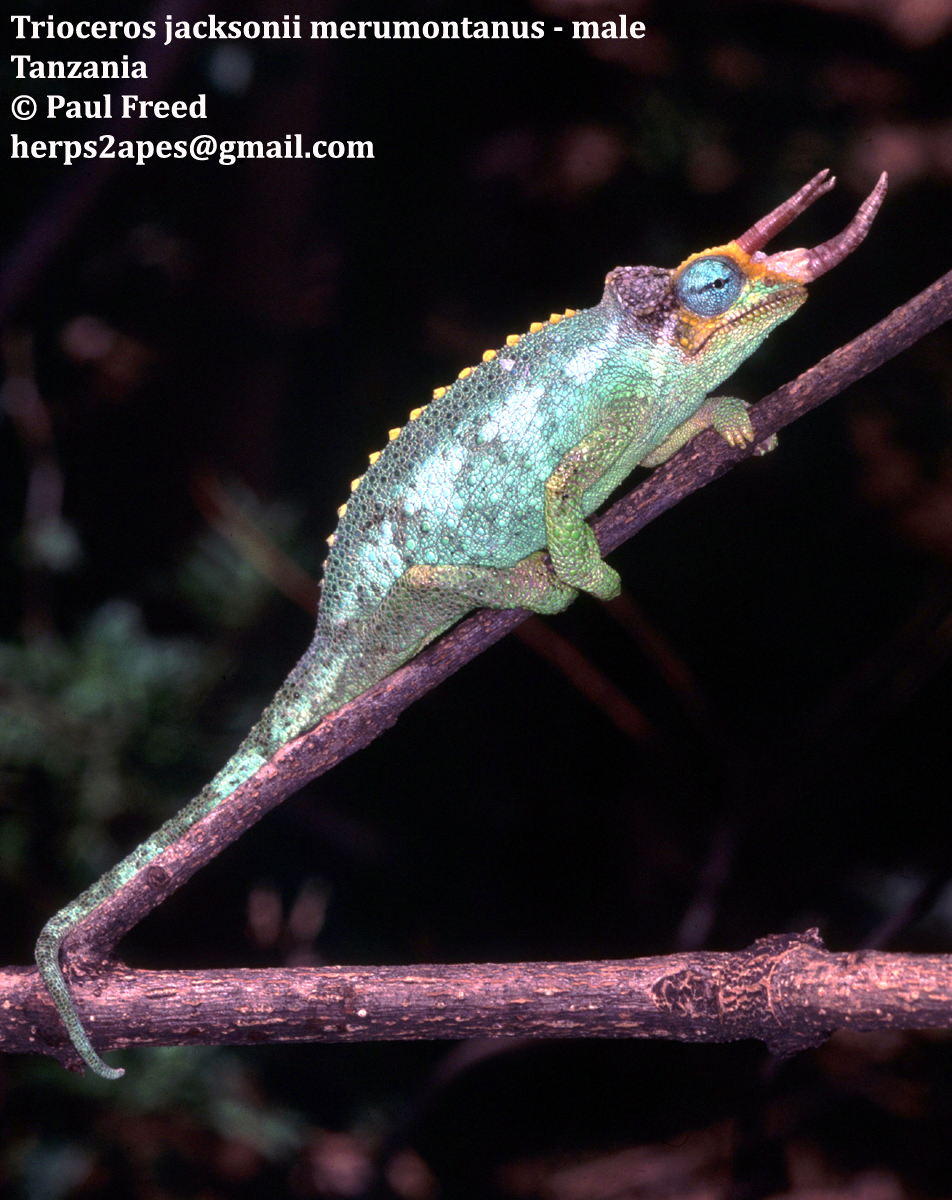
Trying to abbriviate some color theme, this little guy came along with some natural elements and rational tones for a professional look.

Motivation
In my first real-world project, I was deeply involved in both development and UI design. I transformed over 70,000 lines of CSV files (horrifying) and two gigabytes of raw spatial data into visually appealing and usable outputs (even more... difficult).
Old website
